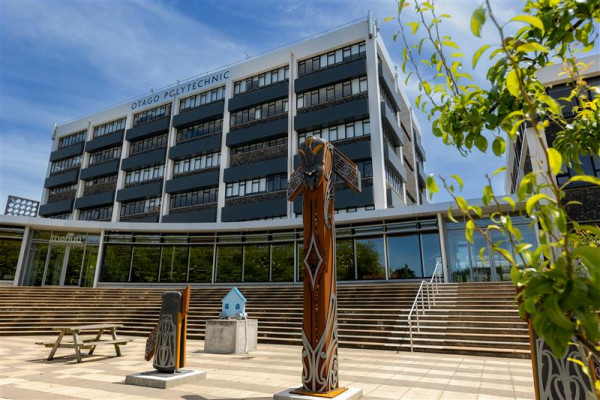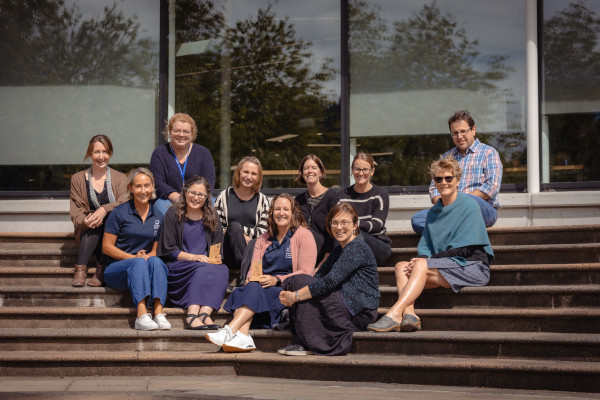- Tūhono home Hoki ki Tūhono
-
- Staff Directory
- Chief Executive Office Auckland International Office Corporate Services Finance Campus Services Functions and Catering Information Systems and Support Marketing, Communications and Engagement Learner Journey Academic Registry International Learner Services Te Punaka Ōwheo
- Learner Experience Academic Excellence Central Campus College of Community Development and Personal Wellbeing College of Engineering, Construction and Living Sciences College of Health College of Work Based Learning Open Education Resource/OERu Research and Postgraduate Studies Te Maru Pumanawa | College of Creative Practice and Enterprise
- Māori Development and Kaitohutohu Office People, Culture & Safety People and Culture Childcare Centre Te Ama Ako | Learning and Teaching Development Wellbeing and Safety Auckland Staff Directory Executive Office Academic Corporate Services Marketing and Business Development Human Resources Campus Quality and Programme Development
-
 Our people make a better world
Our people make a better world
We build the capabilities of individuals, organisations and communities and help them to realise their potential.
Staff Directory
-
- Tools
- Academic Integrity Declaration Form AIC Applications Dashboard Approved Programmes Approved Programme Fees Centralised Assessement Repository Chemwatch CMS - Tūhono & StudentHub updates Course Evaluation and Surveys CRM Applications CRM customer service hub Delegations policy/process Disability and Neurodiversity Dynamics 365 (CRM) EBS Ontrack EBS Report Email Security Personal Portal Employment Matters / Solarworkplace eTaxi eTV
- Financial Variance Reporting Hidden Disabilities Sunflower programme FCM travel intranet InPlace International entry requirements Knowledgebase articles Learner Capability Learner Support Dashboards Linkedin Learning Log a job with Marketing Login as an applicant Microsoft 365 Moderation App Moodle OP Docs OP Docs - Publishing OP Image Libraries Performance Excellence Portal Product Evaluation Panel
- Policy Library Privacy Programme and Course Design and Development Qualtrics XM RDS Remote Access Support Portal Research Database Robertson Library Staff FAQs about Graduation Status of Programmes Student Hub (Kāpehu demonstration view) Study Abroad info for learners Te Whare (Te Pūkenga intranet) Tūhauora I Wellbeing resources Uniprint Vault Webexpenses Auckland Tools
-
 Vault
Had an accident or near miss?
Log it here
Vault
Had an accident or near miss?
Log it here
-
- Communities
- Community AI Steering Committee Ally Network EBS Community of Interest EdTech Champions Health & Wellbeing Research Internal Evaluation Neurodiversity Professional Team Professoriate Proud@OP Student Support Website Advisory Group Web Champions Working under the Rainbow Project Learner Capability Trade Training Centre
- Committee Academic Committee Animals@OP Diversity and Equity Doctor of Professional Practice Committee Kaunihera Whakahaere - Leadership Council Internal Evaluation Learning & Teaching Leadership Team Library Committee Mental Health and Wellbeing Advisory Group Otago Polytechnic Board of Directors Pastoral Care Code Committee Programme Approvals Committee Research and Postgraduate Committee Research Ethics Committee Staff Subcommittee
- Think Tanks Mātauraka Our learners achieve educational success Pūtea Our financial success Tākata Our people, our team, our community Tiriti Our active commitment as a Treaty partner Tūroa Our commitment to be a sustainable and responsive organisation
-
 Create a community
Create a community
Do you have a community, committee or project that you'd like represented here?
Communities
-
- About OP
- Keep up to date All news All events All notices All blogs Share your info Create a news article Create an event Create a notice Create a blog
- Community and Partnerships Alumni and friends Education Foundation Operational information Academic calendar 2025 Academic calendar 2026 Current vacancies Dunedin campus map Our policies Te Whare (Te Pūkenga intranet) Topical FAQs
- Who we are Commemorative sites Māori Strategic Framework Our history Our strategic priorities Pasifika Strategic Framework (2025-2030) Vision and Values Working for us OP job opportunities Wellbeing Calendar Working at OP
-
New Zealand: 0800 762 786
contact us
International: +64 3 477 3014
Weaving the mat: Enablers for Pasifika midwifery students
Author: Talei Jackson
Weaving the mat: Enablers for Pasifika midwifery students
Talei Jackson
16 March 2021
Abstract
Background: Despite there being a large, and increasing, Pacific birthing population in Aotearoa, Pasifika midwives are a minority within the midwifery workforce. There are low numbers of Pasifika students entering and completing midwifery education, and consequently an under-representation of Pacific peoples in the midwifery profession. There is a very real need to attract, educate, and retain greater numbers of Pasifika midwifery students in order to grow the Pacific midwifery workforce.
Aim: This study investigates the sources of support for Pasifika midwifery students in Aotearoa that contributed to their academic achievement, enabling them to successfully complete their undergraduate midwifery degree.
Method: Using a qualitative approach, informed by the Pacific Talanoa Research Methodology (TRM), the sources of support that contributed to Pasifika midwives’ successful completion of their undergraduate degree were investigated. Talanoa/informal interviews were conducted with 10 participants, who qualified between 2013 and 2019. Talanoa took place face-to-face, either individually or in small groups. Interview data were transcribed and coded using thematic analysis.
Findings: The findings of the research show that family and cultural support was paramount for student success. Having close connections with the Pacific community was enabling for Pasifika midwifery students. These connections included the sistership with other Pasifika midwifery students, ‘Aunties’ who offered pastoral and academic support, and Pacific midwifery educators who provided cultural support within the institution. Pasifika staff offered more personalised support and bridged the gap between Pasifika students and non-Pacific academic staff. Foundation courses were deemed beneficial for building knowledge and skills prior to undertaking the midwifery degree. Successful Pasifika students also engaged with learning support services. Financial support, by way of scholarships and subsidies, relieved some of the significant financial pressure that Pasifika midwifery students faced.
Conclusions: Pasifika midwifery students are enabled by support from their family, close connections with the Pacific midwifery community, a Pasifika presence at their institution, and financial assistance. A wrap-around approach is recommended for providing culturally appropriate support for Pasifika midwifery students. The findings from this research will enable more tailored support for their needs. A growth in the number of Pasifika midwives will be positive for the midwifery workforce, and the health and wellbeing of all birthing communities in Aotearoa.
Keywords: Pasifika, Pacific, midwifery education, enablers, qualitative, Talanoa Research Methodology
Talei Jackson's thesis was supervised by Karen Wakelin and George Parker.
License
This thesis is available under a Creative Commons Attribution-NonCommercial licence CC BY-NC 4.0 International.